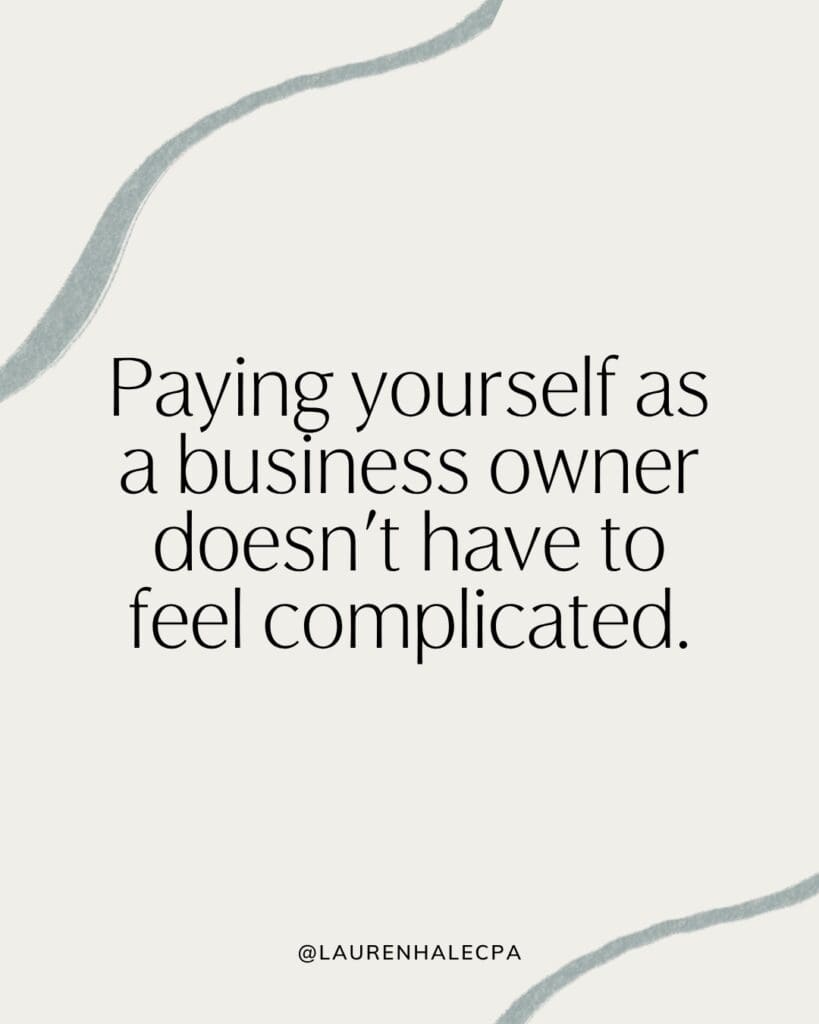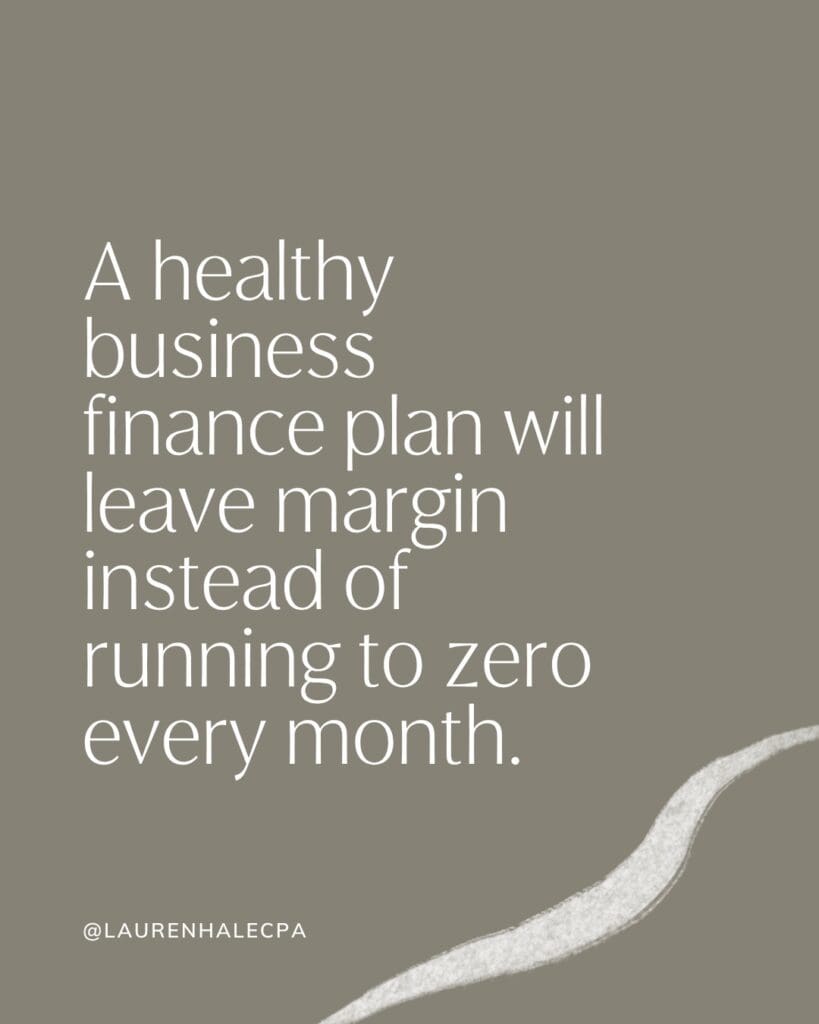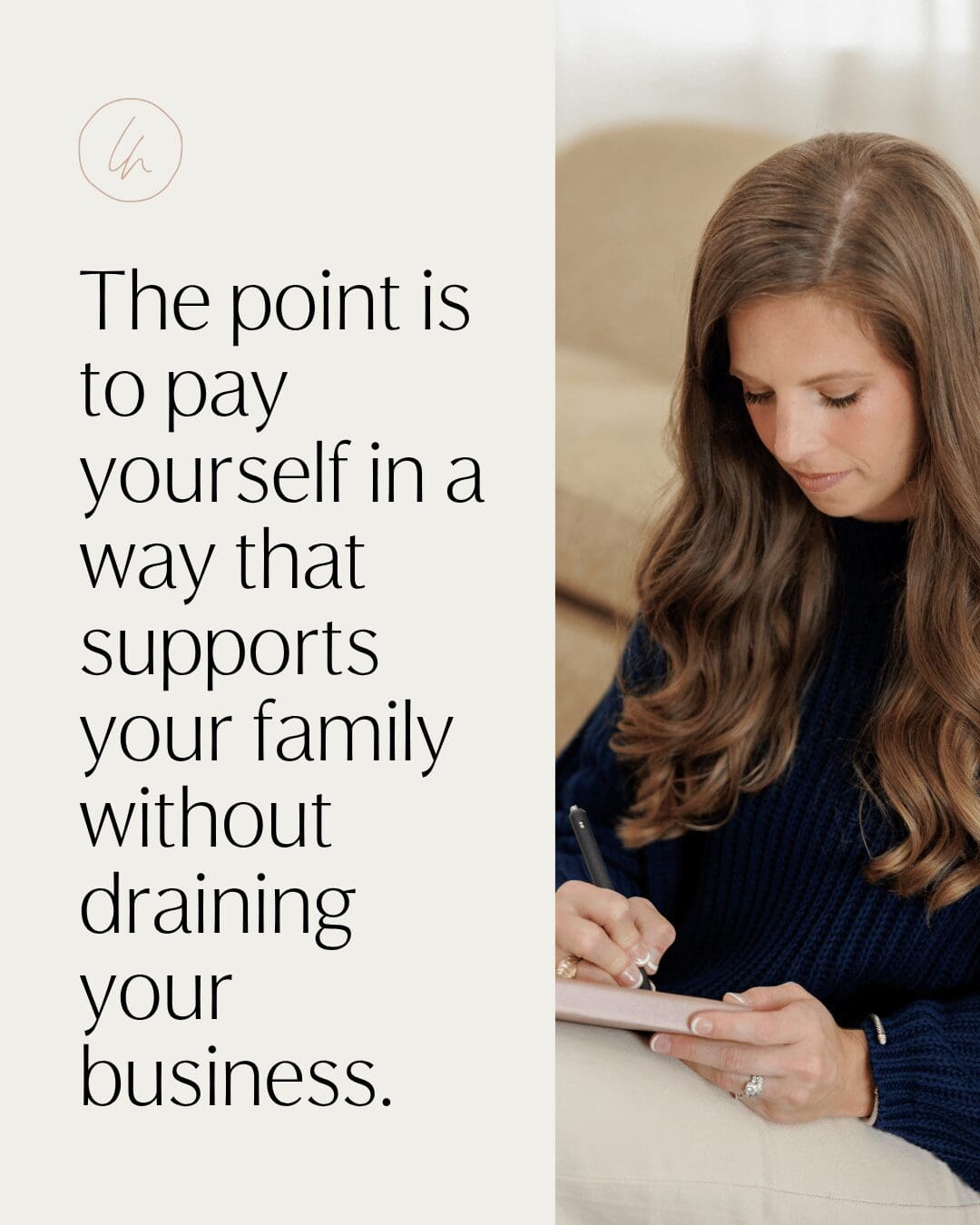If you own a business, chances are you’ve had this thought at least once: “How much should I actually pay myself?”
You’re not alone. I hear this question all the time from business owners at every stage. And it’s a great question—because paying yourself isn’t as simple as transferring money whenever you feel like it. The way you take money out depends on your business structure, the IRS rules around payroll, and, most importantly, keeping your business profitable.
Let’s break it down step by step.

How to pay yourself as a business owner starts with your business structure
The first thing to know is that business structures determine how you can legally pay yourself. You cannot skip this step.
- S corporations and C corporations. If you’re both an owner and working in the business, you’re considered an employee. That means you must pay yourself wages through payroll, and the IRS expects it to be reasonable compensation for the work you actually do. You can still take distributions from profits, but only after you’ve paid yourself a salary.
- Sole proprietorships and partnerships. If you’re a sole proprietorship or your LLC is taxed as a partnership, you don’t run payroll for yourself. Instead, you take an owner’s draw. But here’s the catch: those draws are still subject to self-employment tax (which includes Social Security and Medicare) plus income tax on your personal return.
Once you know which category you’re in, the rest of the decisions—how much, how often, and in what form—get much easier.
How to pay yourself as a business owner in an S-Corp or C-Corp
If you’re in an S corporation or C corporation, the IRS rule is simple on paper but tricky in practice: you must pay yourself a “reasonable” salary through payroll.
The problem is, reasonable compensation isn’t defined anywhere in the tax code. The general test is: If you had to hire someone tomorrow to do your job, what would you pay them? What does the fair market value of that position dictate the salary be?
Here’s how to keep yourself on the right side of the IRS:
- Salary comes first. Pay yourself wages before taking distributions. Skipping this step can lead to penalties or the IRS reclassifying your distributions as wages anyway.
- Don’t go too high or too low. Pay too little and the IRS will say you’re avoiding payroll taxes. Pay too much (especially in a C-Corp) and the IRS may call it an excessive deduction.
- Bonuses are your friend. Many business owners choose a base salary they know their cash flow can support, then pay bonuses quarterly or at year-end when profits are strong.
If you’re also a corporate officer, the expectation is even stronger that you’ll be on payroll. Trying to get around it with only distributions is a recipe for IRS trouble.

How to pay yourself as a business owner if you’re a sole proprietorship or a partnership
If your business is set up as a sole proprietorship or partnership, things look different. You don’t put yourself on payroll, and you don’t cut yourself a W-2. Instead, you take owner’s guaranteed payments or draws out of the business when profits allow.
But don’t miss this: while the draw itself isn’t taxable, the profit of the business is. You’ll owe both income tax and self-employment tax, which covers Social Security and Medicare. That means you need to plan ahead by setting aside a percentage of your profit for quarterly tax payments.
Think of it this way: you’re still paying into the system like any employee—you’re just the one responsible for sending the money in.
How to pay yourself as a business owner in the real world
I think it’s safe to say that most small businesses do not bring in the exact same revenue every month. Some months are booming, and some months feel lean. That’s normal. The goal is to create a pay rhythm that works for your business, not force yourself into a one-size-fits-all box.
Here are some real-world approaches:
- Seasonal pay. If your busy months are spring and fall, it makes sense for your paycheck to be bigger then and smaller in slower seasons.
- Base pay + bonus. Many business owners set a smaller, steady amount they know they can afford, then add a quarterly or year-end bonus when profits allow.
- Write down your plan. Even if it’s just in your notes app, document how and why you pay yourself. That way, you have consistency—and something to point to if questions ever come up
The point isn’t perfection. The point is to pay yourself in a way that supports your family without draining your business.

How to pay yourself as a business owner without draining the business
Here’s the part many business growth “gurus” on the internet skip: your paycheck has to fit inside your business’s finances. You can’t spend money you don’t have.
Here is a simple order of operations for you to follow:
- Confirm the cash flow from last month—actual money received, not just invoices sent.
- Cover next month’s fixed expenses.
- Move tax money into a separate account.
- Leave room for profit so your business isn’t running on fumes. (Bonus tip- set a profit % aside in a separate account. Pretend it’s not even there until you take your quarterly or annual bonus draw)
- Pay yourself from what’s left.
Recommended reads: Profit First by Mike Michalowicz
A healthy business finance plan will leave margin instead of running to zero every month. Many owners aim to protect around 30% profit after paying themselves, though the exact number depends on your industry, your expenses, and how much your revenue varies from month to month.

How to pay yourself as a business owner and keep taxes clean
Taxes aren’t fun for everyone (though obviously we here at Lauren Hale CPA’s think they are fun), but ignoring them is worse. Here’s the quick snapshot:
- Corporations. Shareholder-employees run payroll, withhold taxes, and then take distributions on top of wages if there’s profit left.
- Single-Member LLCs and partnerships. Take guaranteed payments or draws, track your profit, and pay quarterly estimates to cover income tax and self-employment tax.
- Self-employment tax. This is where Social Security and Medicare get funded for sole proprietorships and partnerships.
- Corporate officers. If you’re a corporate officer in your corporation, the IRS expects you to pay yourself wages.
Keeping this straight protects your business and keeps tax season from being a surprise you can’t afford.
A simple monthly rhythm for paying yourself
Here’s the rhythm I walk clients through:
- Close out last month. Look at how much money actually came in, after the QuickBooks fees and everything else.
- Check expenses. Make sure next month’s bills, payroll, or contractors are covered.
- Set aside taxes. Move money into a separate account for payroll or quarterly estimates.
- Leave a cushion. Don’t pay yourself so much that your business can’t breathe.
- Pay yourself. Transfer your salary or draw with confidence.
- Handle extra profit. Take a bonus if it makes sense—or leave it in the business for slower months.
This takes the guesswork out of payday. Instead of wondering if you’re paying yourself too much or too little, you’ve got a repeatable process that protects both you and your business.
Ready to take the guesswork out of your business finances for good? Book a call with Lauren today to see if we’re the right fit to help you finally understand your business finances!

Final thoughts
Paying yourself as a business owner doesn’t have to feel complicated. It’s really about three things:
- Know your business structure so you follow the right rules.
- Pay yourself in a way that’s reasonable compensation for the IRS and sustainable for your business.
- Keep income tax, profit, and cash flow in the plan so your business stays healthy long-term.
When you do that, you stop second-guessing and start paying yourself with confidence. And that’s good for you, your family, and the future of your business.
